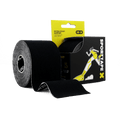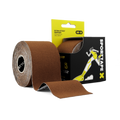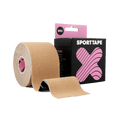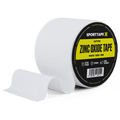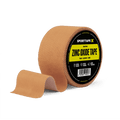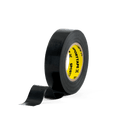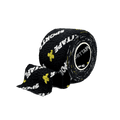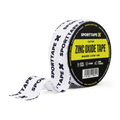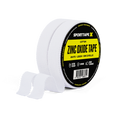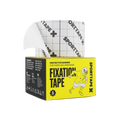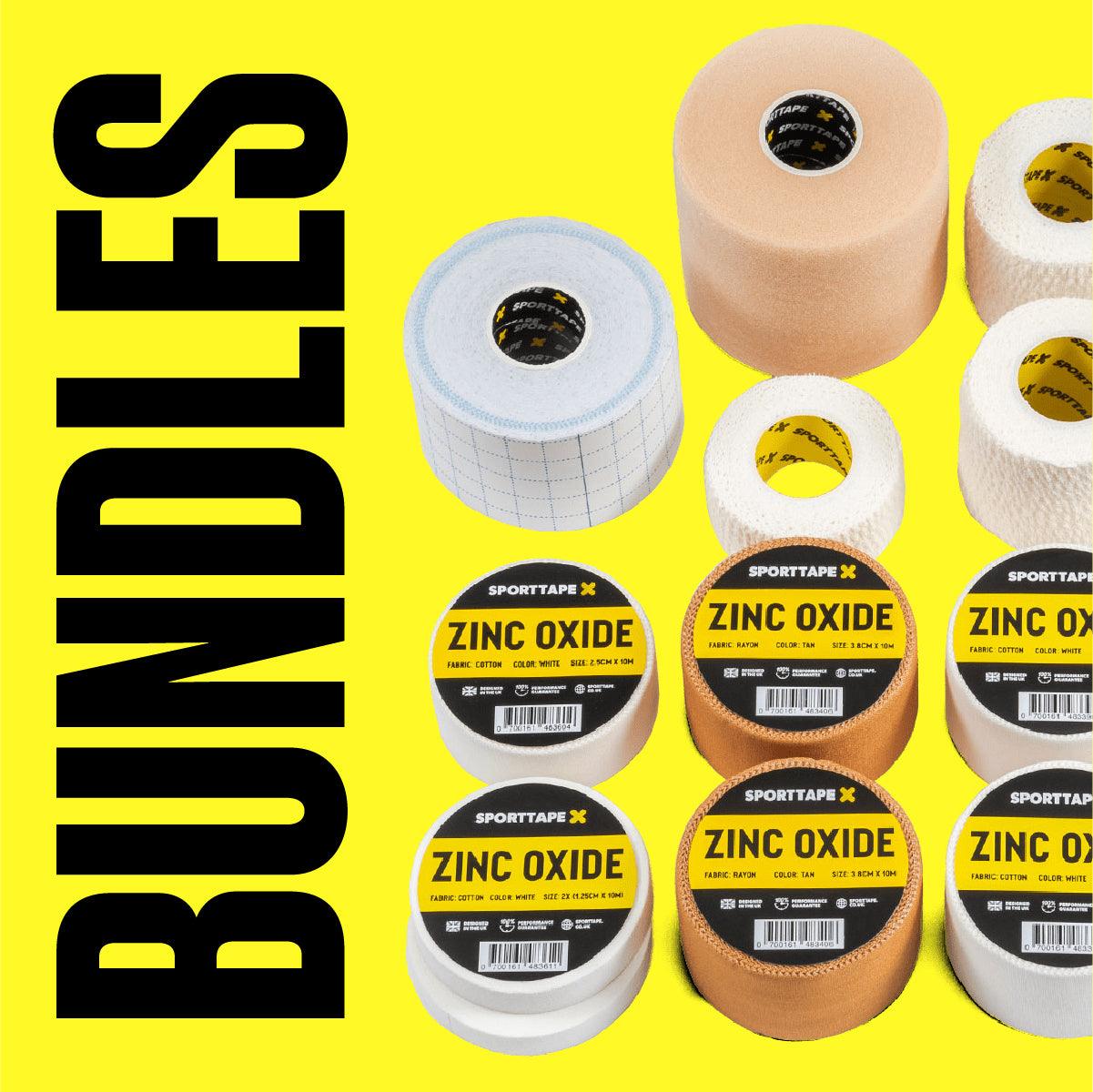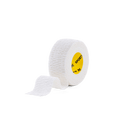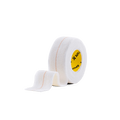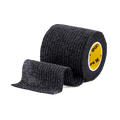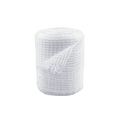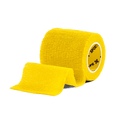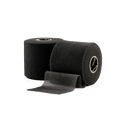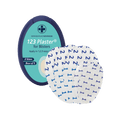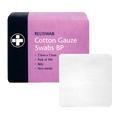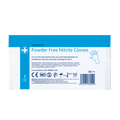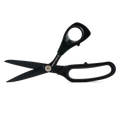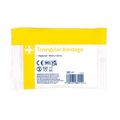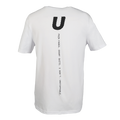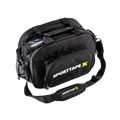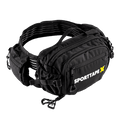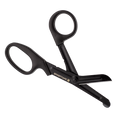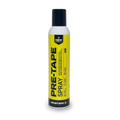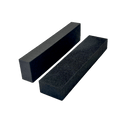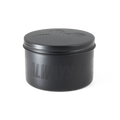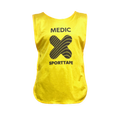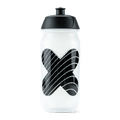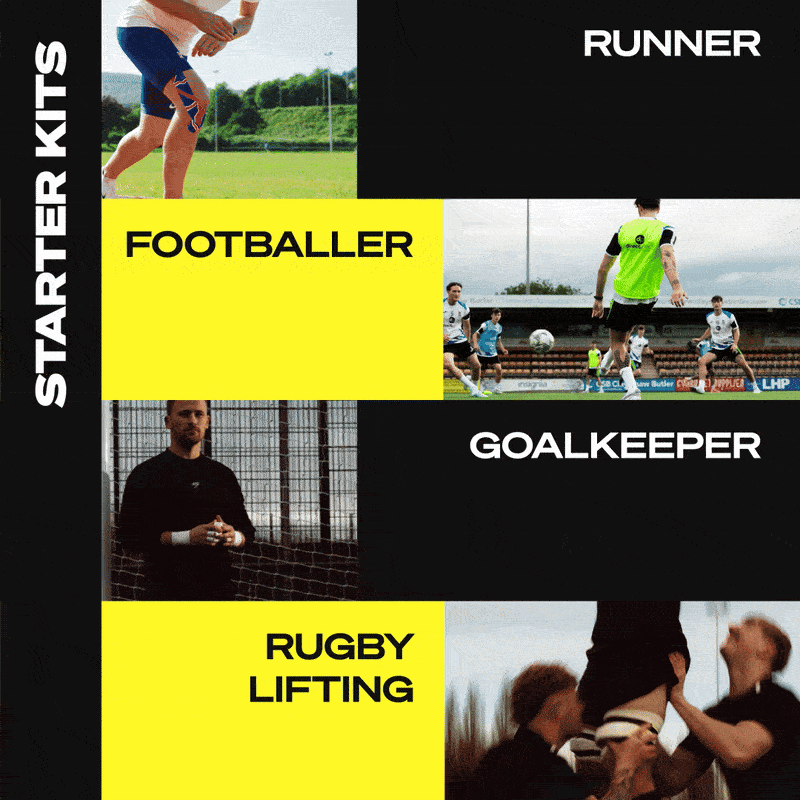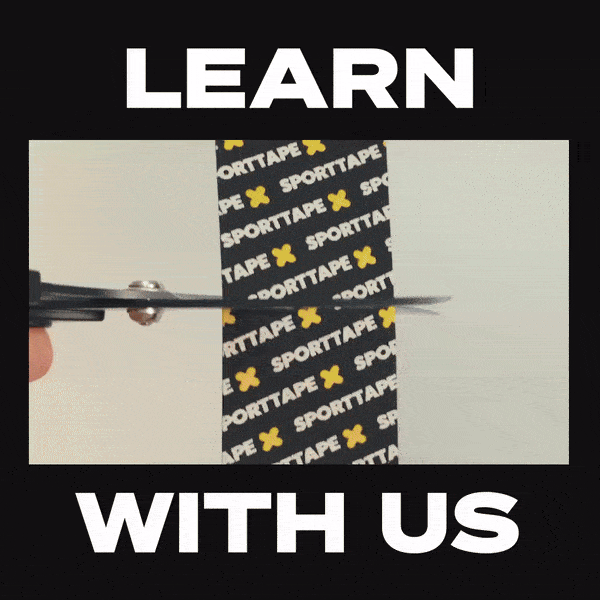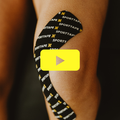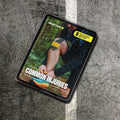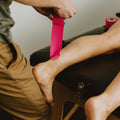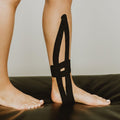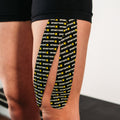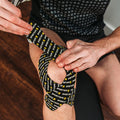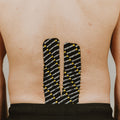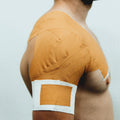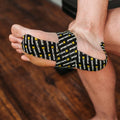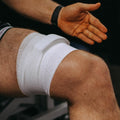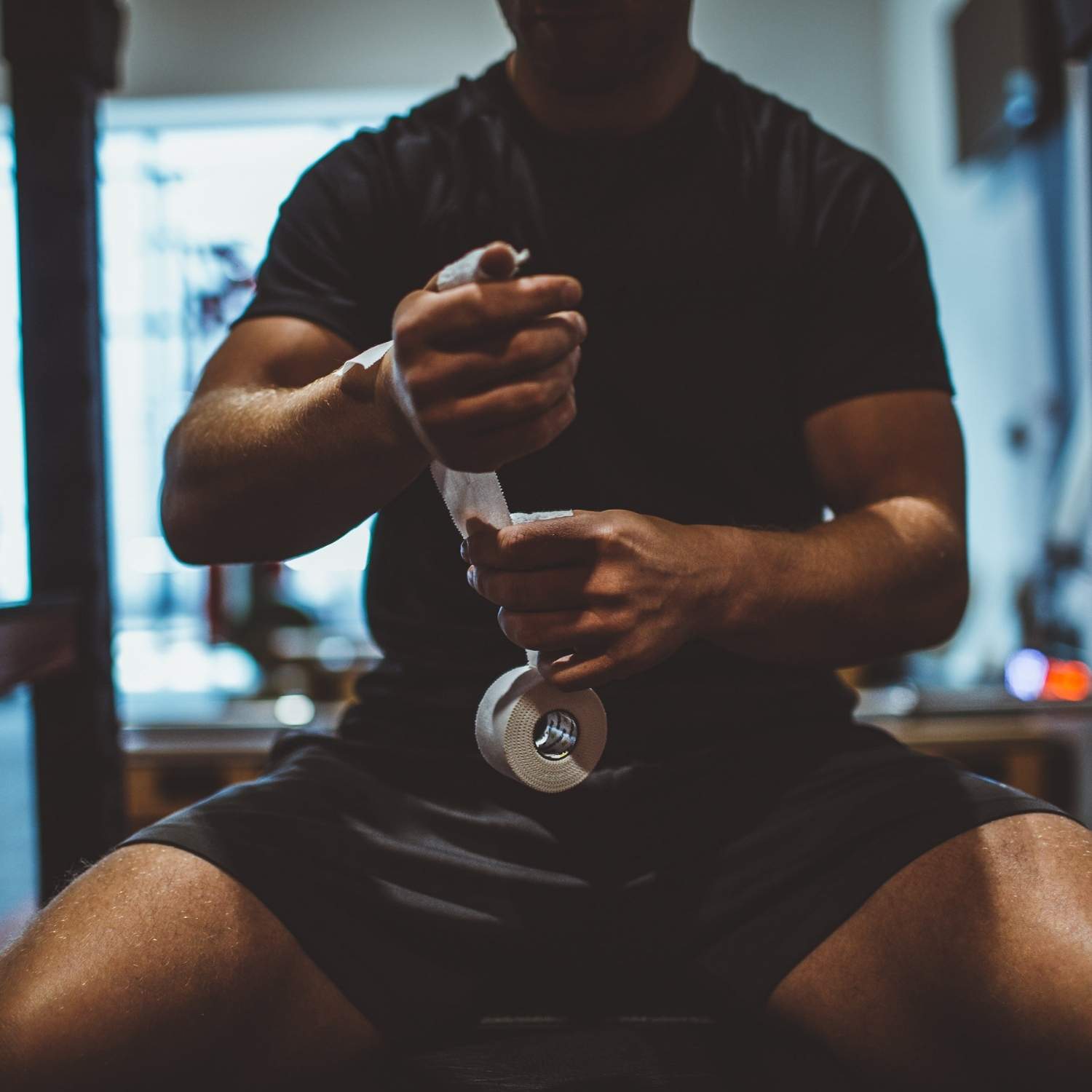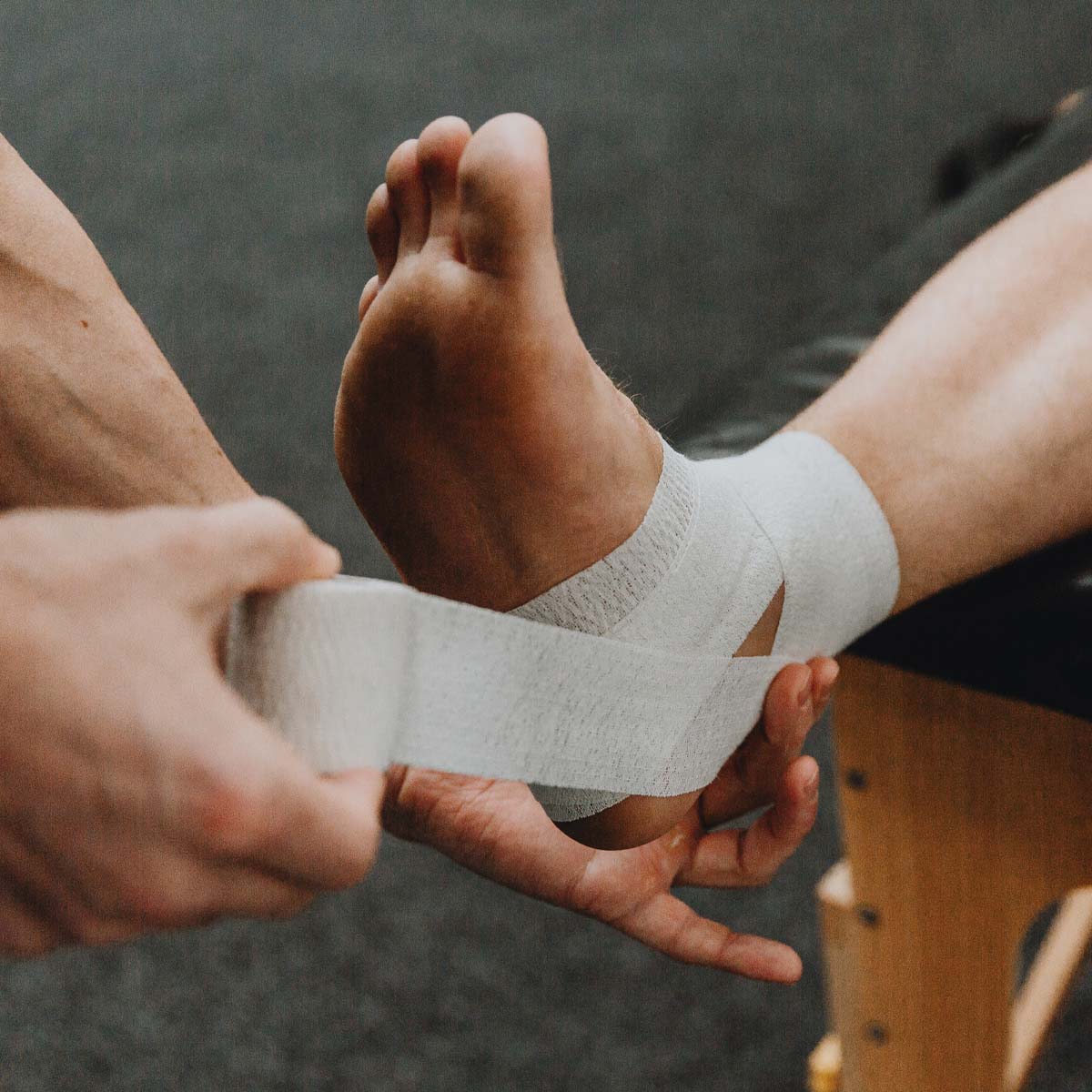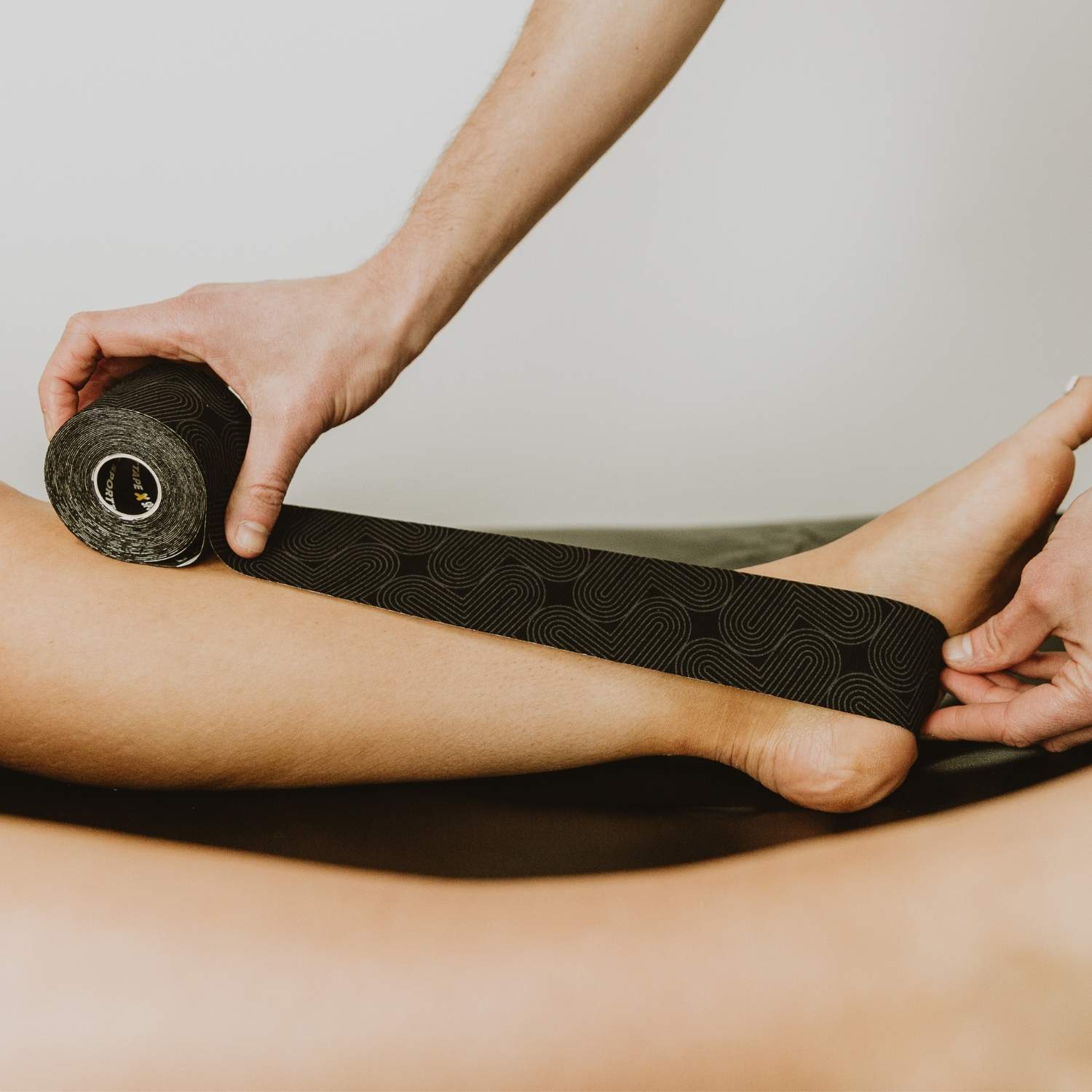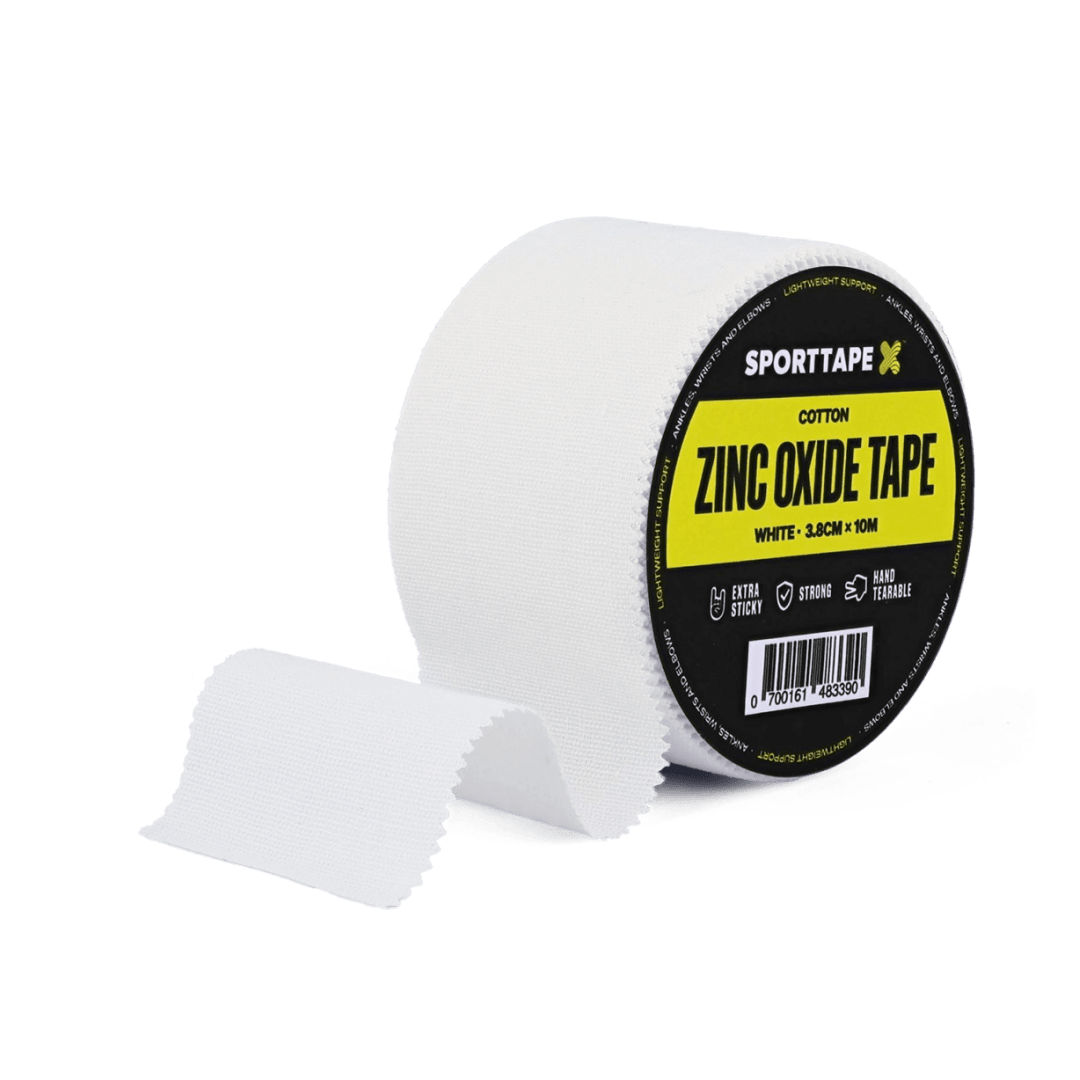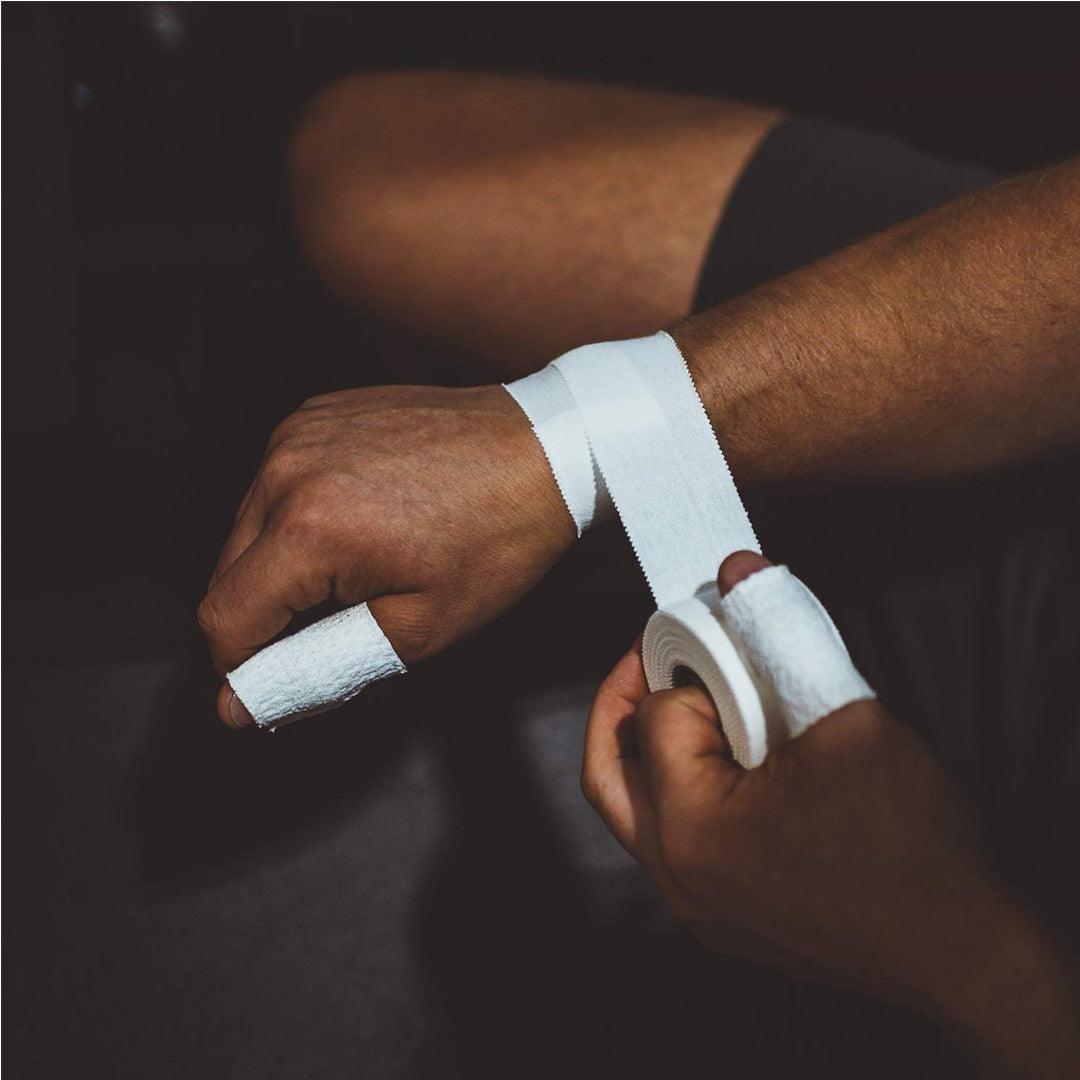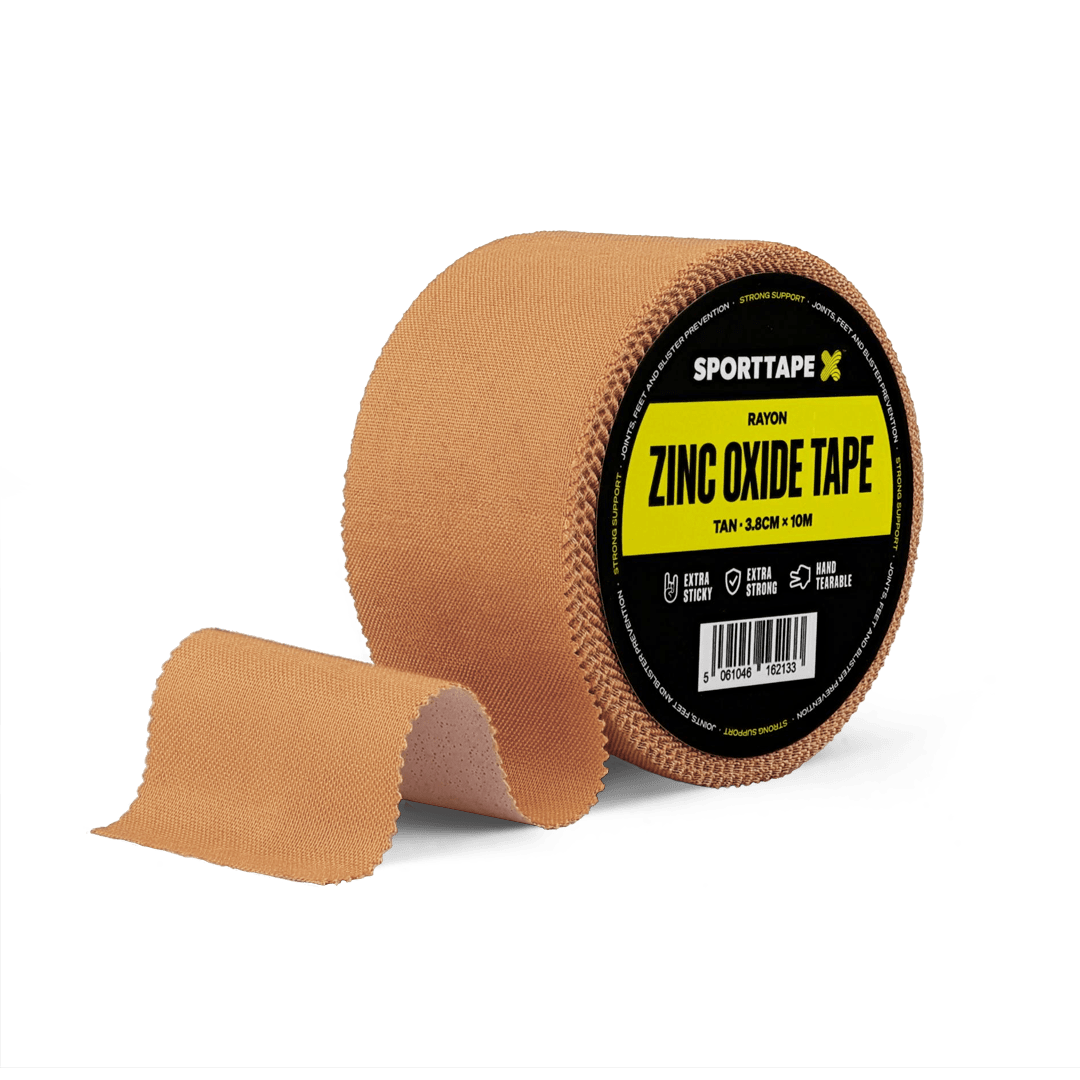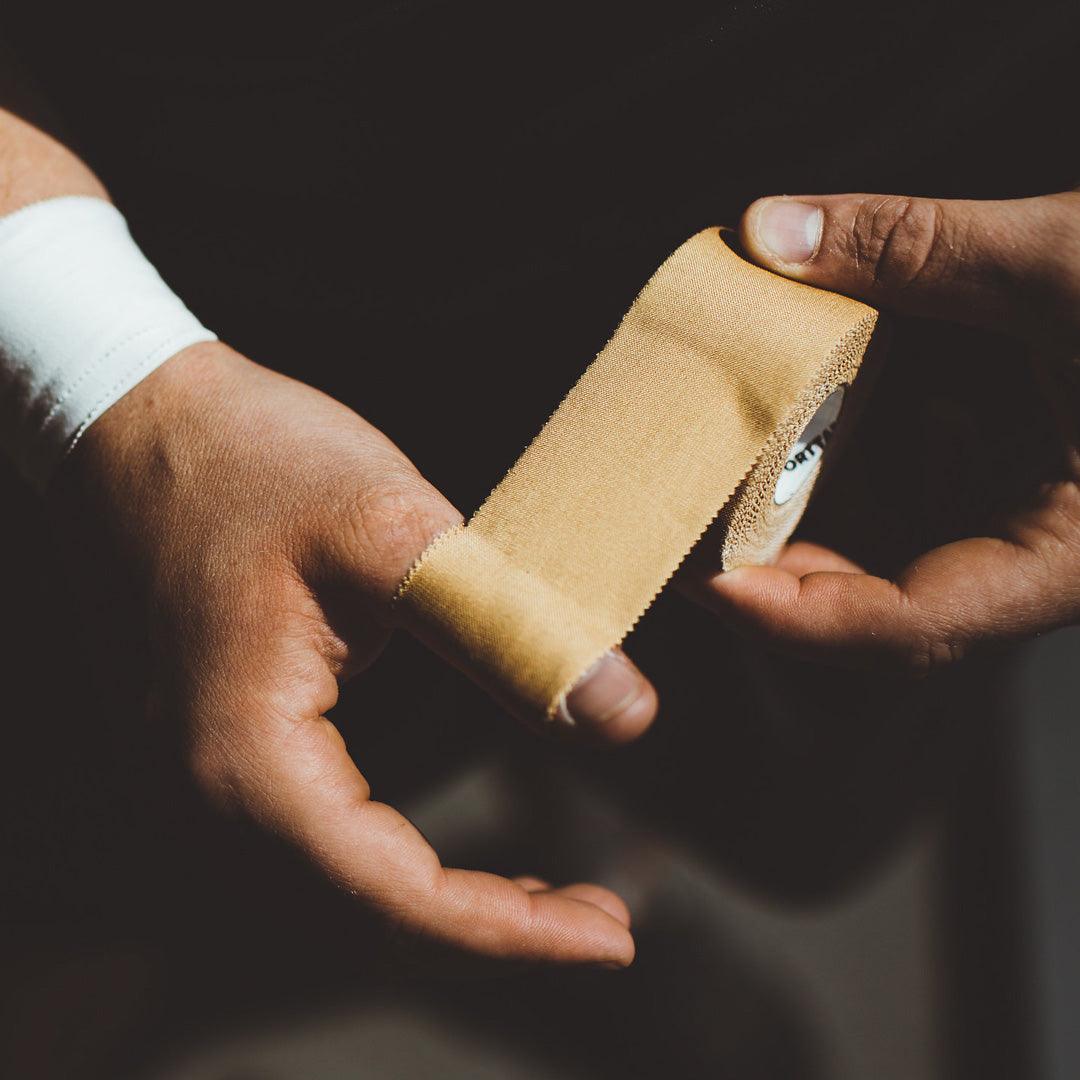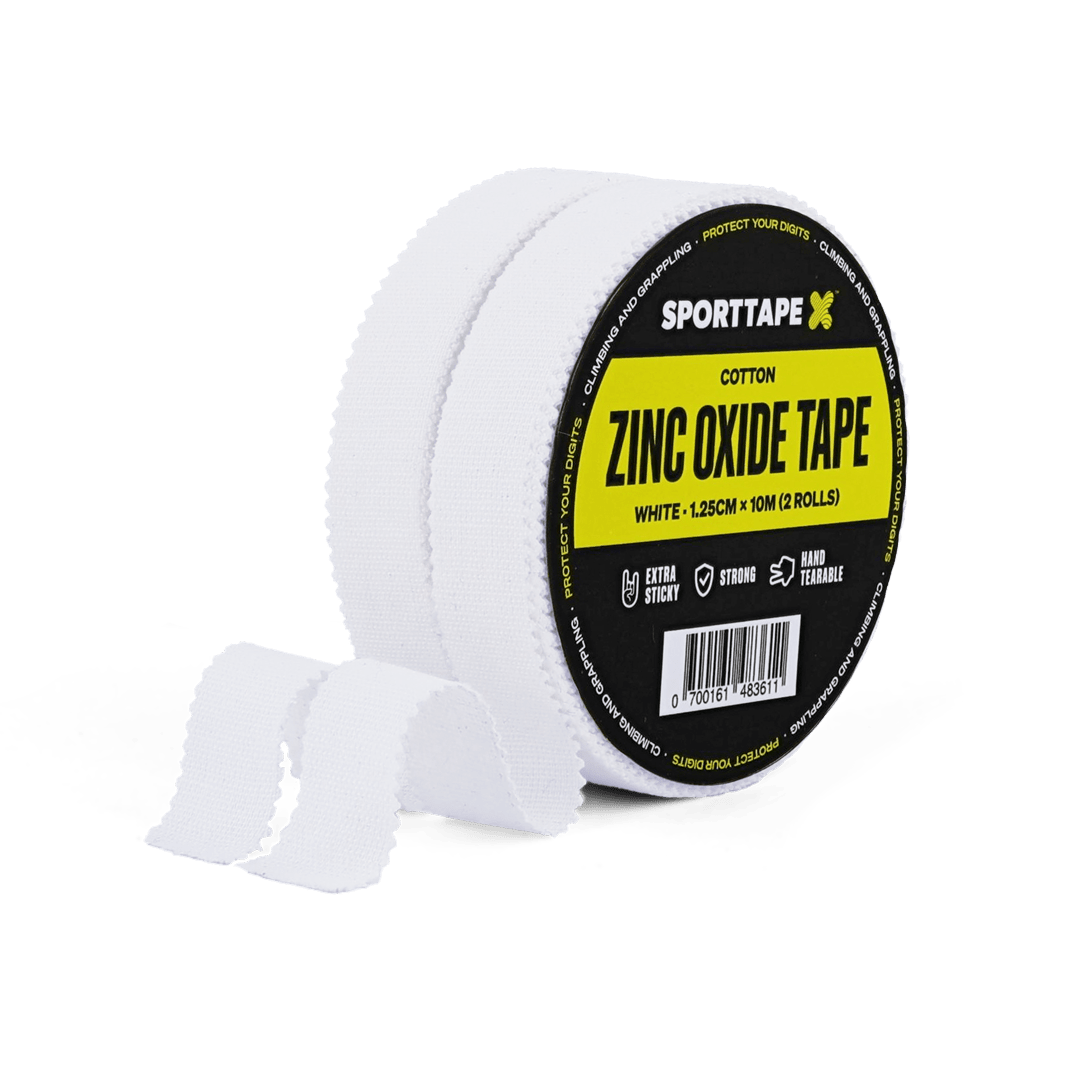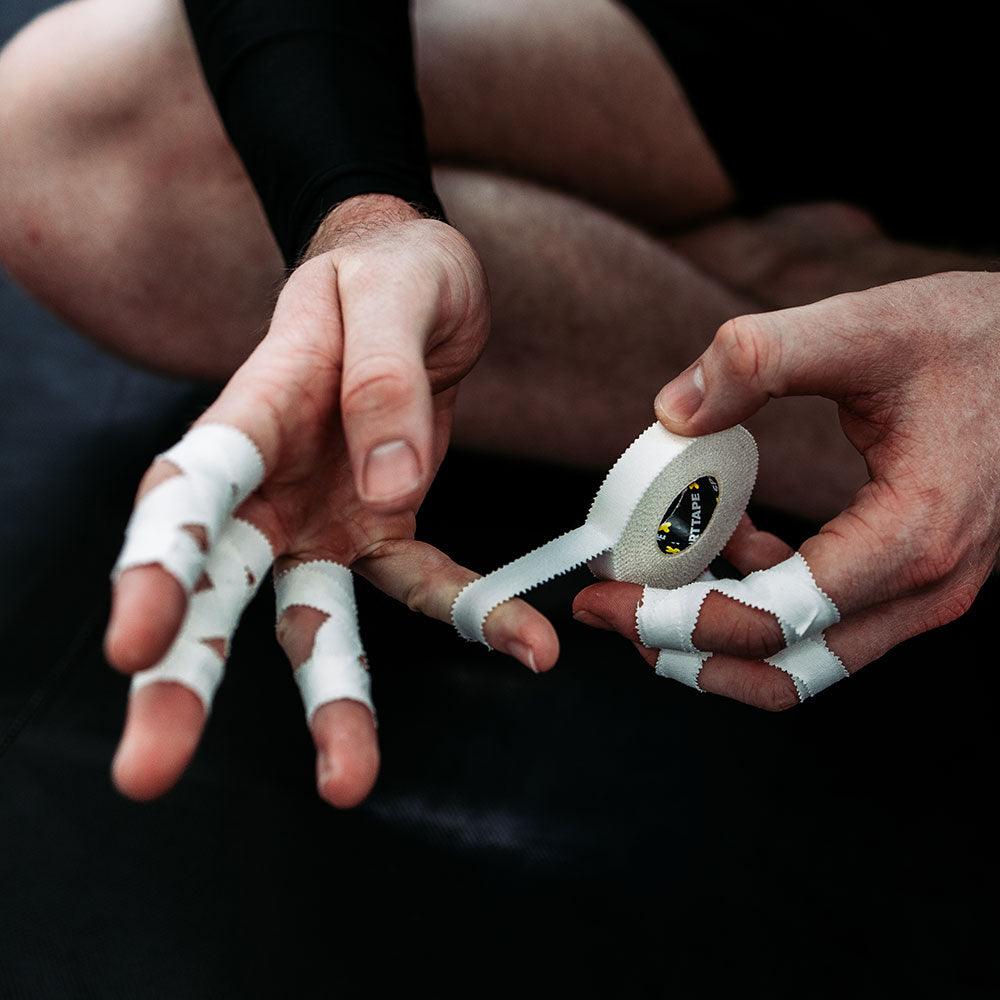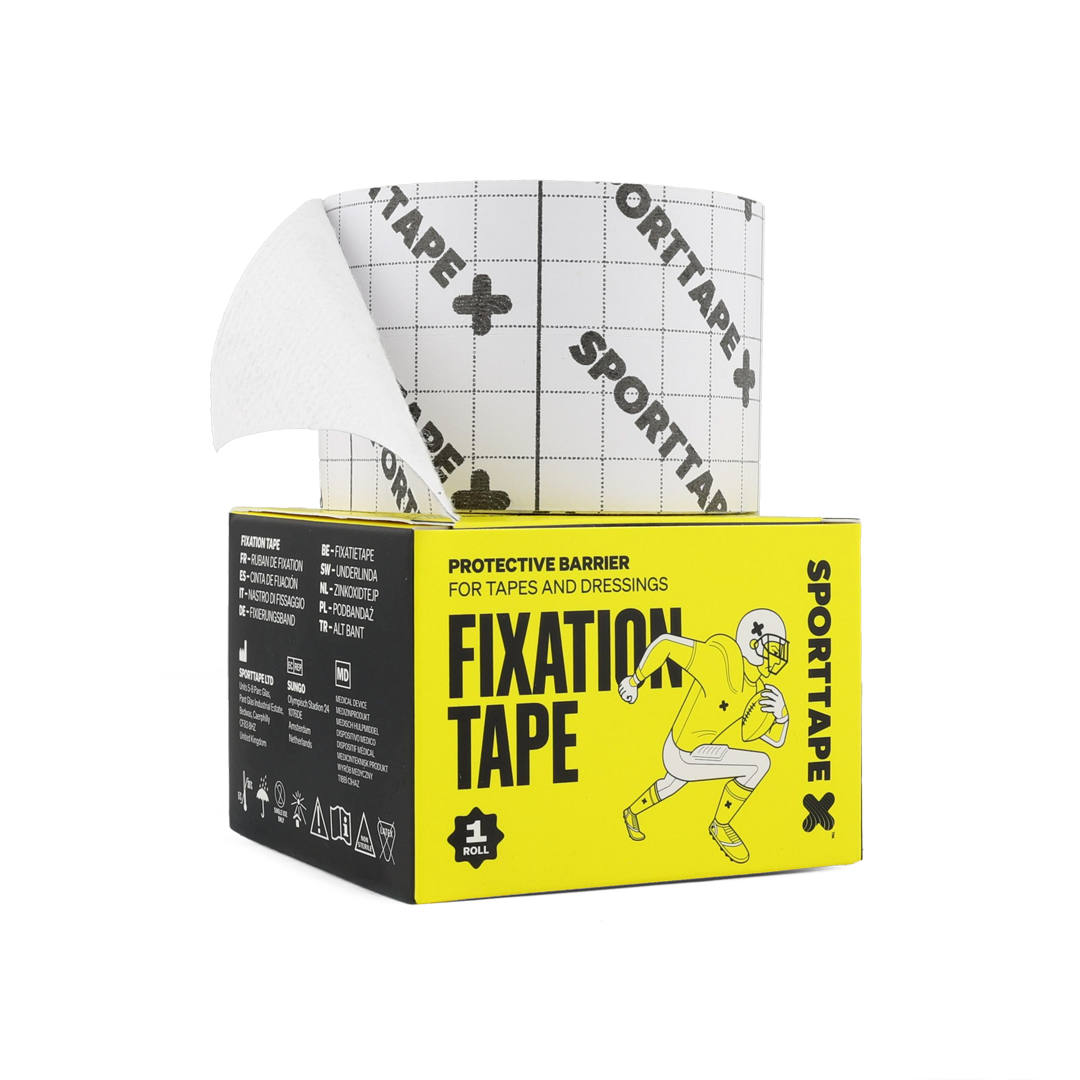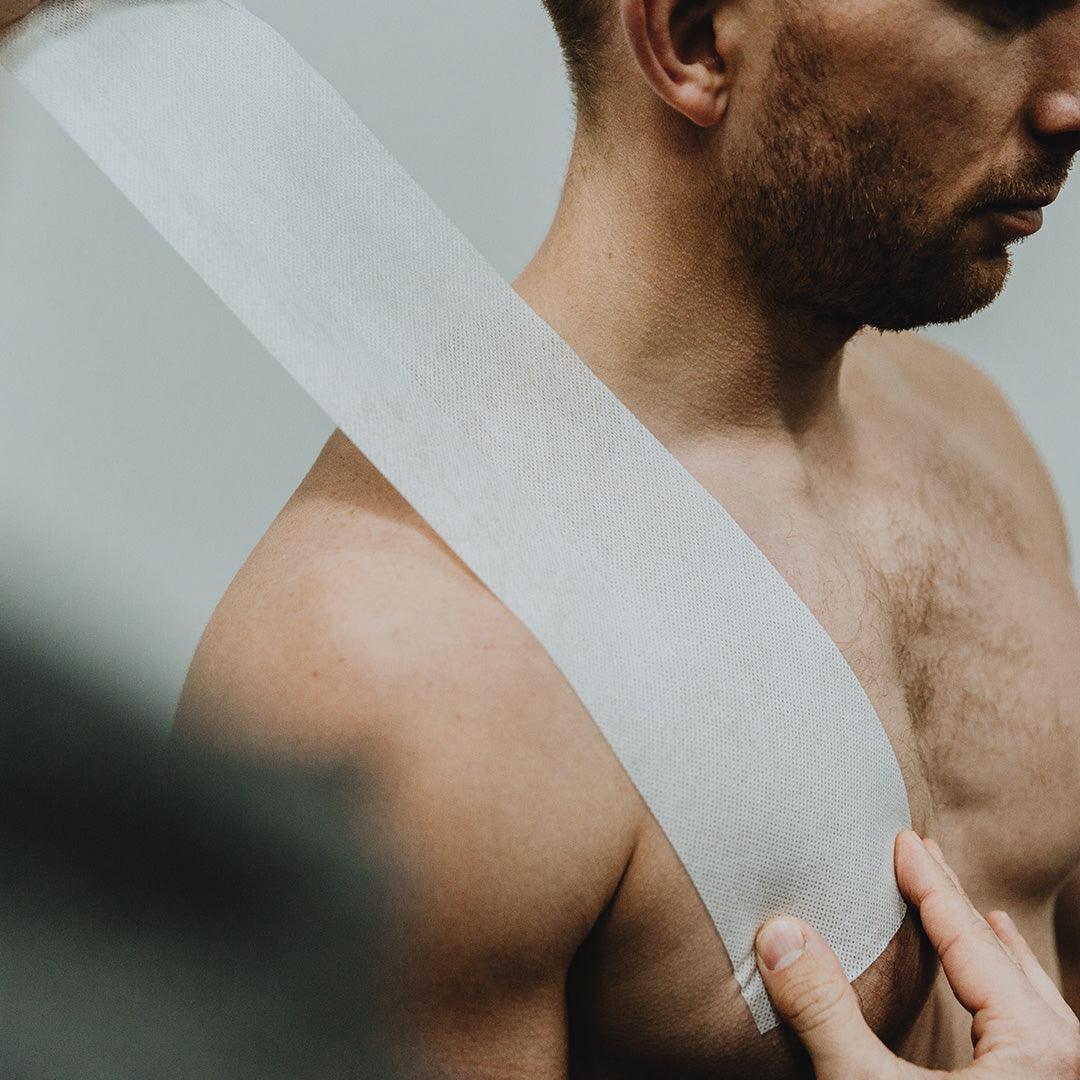Zinc Oxide Tapes are an essential in any physio's medical bag. They form the foundation for most supportive applications and are heavily relied upon in every sport, across the world. This blog post will teach you all about Zinc Oxide Tape and help you choose the best tape, taking into consideration; the properties of the tape, its performance and the value for money.
HOW TO TEST YOUR SPORTS TAPES - ZINC OXIDE:
WHAT IS ZINC OXIDE TAPE?
Zinc Oxide Tape is the only choice if you need to immobilise an area. It is a non-stretch tape that provides unrivalled support.
Choose the Tan/Brown version for its highest tensile strength. Because of it’s tensile strength, the most common use of Zinc Oxide Tape is to support joints such as the ankle, knee and shoulder. You won’t usually see it on show though – it’s usually hidden by a sock or jersey.
TENSILE STRENGTH AND STRETCH
Zinc Oxide Tapes are used to immobilise, restrict range of motion, and provide support of a ligament or muscle. Consequently, they must withstand considerable force; up-to 4 x body weight.
HOW TO TEST
The first thing you should do? Try to pull the tape apart by hand. Does it feel strong? Be careful and make sure to apply even pressure and see if you can stretch and rip the tape. They should have absolutely no stretch, you shouldn’t even notice the smallest movement.
- Zinc Oxide White is a lighter more malleable cotton fabric so it will rip by hand under considerable force.
- Zinc Oxide Tan is impossible to rip by hand. The man-made rayon fabric will withstand up to 200lbs of pressure.
RIP
It’s crucial that Zinc Oxide Tapes can be be ripped by hand easily and quickly. When you have a full changing room of players to tape, time is of the essence and scissors will only slow you down.
HOW TO TEST
Check to see if the roll has a slightly jagged edge. This makes the tape much easier to rip and allows for quick and convenient applications. See how easily and neatly it can be torn, and if the edge is neat after you have done so. It should feel quick and crisp, leaving minimal fraying and require little effort.
ADHESION
Don’t be mistaken. It’s not a simple equation; stickier or more glue, doesn’t always equal a better Zinc Oxide Tape. A good glue should:
- Be sticky but not overly aggressive (minimise skin irritation).
- Be breathable (this improves longevity & reduces irritation).
- Be hypoallergenic.
- Leave minimal or no residue on removal.
HOW TO TEST
Breathability – Hold the tape up to the light. Visually, the layer of glue should be smooth and consistent, without any patches of excess or missing glue.
Adhesion – The glue should feel strong, tacky and stick quickly. We would recommend performing an ankle lock to assess the performance.
Residue & Glue Quality – Fold the tape onto itself and try peeling it apart. It should be difficult but the adhesive should remain on the cloth and not separate from the fabric.
PEEL
Overlook this at your peril. When you’ve got to perform multiple applications, a nice peel is a real forearm saver.
HOW TO TEST
Peel the tape away from the roll, it should come off the roll smoothly and with moderate resistance all the way down to the core. This makes it easier to apply your application with the same tension throughout the entirety of the roll.
MALLEABILITY
You want a Zinc Oxide Tape that conforms to the body, making it easier to handle and ultimately more comfortable for your athlete.
HOW TO TEST
Check the sheer by peeling a little tape from the roll and holding it vertically and tightly in one hand whilst holding the roll in your other hand.
Check the sheer by moving your lower hand from side to side. You are looking for the point when the tape starts to fold and crease. Malleable Zinc Oxide Tape will allow for around 20-30 degrees of movement before creasing.
And that's it! Now you know how to identify a good roll of Zinc Oxide Tape. If you're a sports therapist, get used to seeing this tape and if you have any more questions for us at all, get in touch! We'd love to help.


